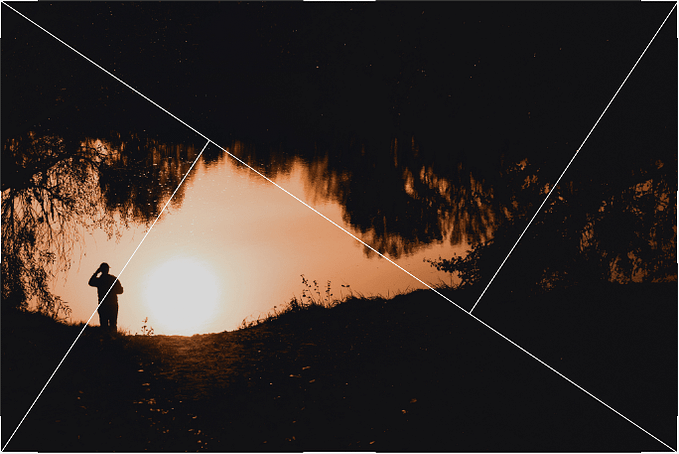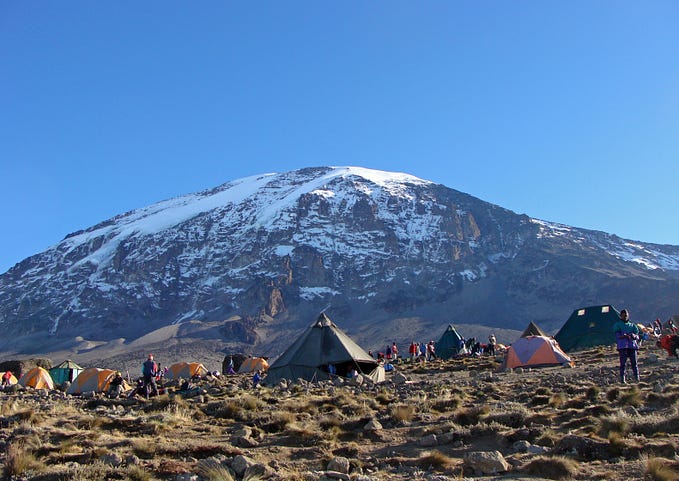
Carlos Ribas Monteiro On Photographing Across Cultures

Take a look at the work of Carlos Ribas Monteiro, and you get a sense of the breadth of his style, and his fascination with culture and place. I met Carlos at a PhotoXpeditions workshop in Oaxaca, Mexico, led by Maggie Steber. In the below interview, we reference both Mexico and Maggie. We also talk about the classic photographers who have influenced Carlos across the decades, and the sense of privacy that exists in various cultures, which in turn reflect the legality of publishing photography in various countries.
Bryn: What kind of photography would you say that you shoot?
Carlos: I would say everything interests me. But, if I look at the photography that I used to make 40 years ago, in the 70’s, and if I look at the photography that I make now, I already find some resemblance.
Bryn: That’s interesting.
Carlos: I mean when I was 17 or 18, I already had a bit of the eye I have now. I mean, being able to capture strange faces, candid expressions, often taking pictures of people on the street. There is a line that crosses the kind of images that I produce across time. There is a similitude of images. But everything interests me. When I go to a forest, I look for beautiful images of nature. If I am on the streets, especially after I went to India, where there is a lot of stimuli, a lot of people, I got very at ease with photographing people. And now in Europe, I can easily approach somebody and ask if I can take their photograph. Or, even without asking, to not disturb the natural way of capturing the image.
Bryn: Let’s talk about you said about photographing people. I think that when a lot of photographers are just starting out, they want to capture street scenes, and they might like the documentary style of photography, but they don’t want to photograph a person, for possibly being thought of as rude, or maybe creating an uncomfortable sense. Can you talk about your experiences with that?
Carlos: It varies a lot from culture to culture. There are some cultures where it is very easy to approach a person. And it’s common to find situations where the people like to be photographed. They feel important to be considered as a motive for photography, in India this is common, and in Cuba you can find that, and in Asia, in general, it works like that. But if you go to more, if I can say, civilized countries, for example, France, people are self-conscious, and they consider that it’s their intimacy space. And being photographed is like invading their intimacy. It depends from person to person. Some people are really very aggressive on that.
There’s an American photographer, how is he called, Bruce Gilden, a Magnum photographer, and he doesn’t care at all about how people react, because it’s his right. He can photograph people, the law protects him. He doesn’t care how the person reacts. You’ll find on Youtube videos of him photographing people on the streets, and you see some confrontational situations, and he acts completely unaware of what he is causing to people. This is a very polemic situation. So, there are different approaches.
Mary Ellen Mark, who we talked about a lot, she had a saying, “I just think it’s important to be direct and honest with people about why you are photographing them and what you are doing. After all, you are taking some of their soul.”
Bryn: That’s a really good point.
Carlos: So, with my practice, I got to a point when I can feel by the way the person moves, by the way the person looks, it’s a gestural communication, if the person is receiving my approach well or not. And so, most of the times I am right on this judgement. And when I feel the person might be uncomfortable, I ask permission or there’s a communication that leads to me having approval or not. This sometimes is very fast. The approach is a relation of seduction. There’s a communication that might be seduction or hostility, it depends. For example, if you find somebody that is an African, there is a risk of being difficult to photograph. The probability of being not accepted is much higher.
Bryn: I think what you said earlier about how it depends on the culture is very important. Because what I noticed when we were in Mexico, some of the older indigenous people didn’t want to be photographed, but they wouldn’t say this. If you asked them if you could photograph them, they would ignore you, and they would look away or they would shield their face. And I heard a news report from somebody who had been researching that culture. He said there was such historical distrust amongst indigenous communities and the non-indigenous people, that they generally don’t like people from outside of their community coming in. That’s why they don’t like the picture to be made, and why they don’t trust a foreign photographer to come in. That really is very different, than say when you were in this festival in Porto, and I was in a similar festival in Dallas, when people were stopping me on the street asking me to take their picture.
Carlos: Yeah, but sometimes, in certain situations, I ask someone to take a picture, and they say “no”. And I insist, and I seduce, and in the end the person opens, and let’s their barriers fall, and I can take pictures comfortably. It varies a lot. I think it’s an interesting subject, and it could be a motive for a sociological study.
Bryn: That’s a really interesting point. One thing that I’ve noticed is that it could be either sociological or psychological as well. I’ve noticed that if I take a picture of somebody, and I show it to them, and I emphasize how good they look in the picture, they are much more likely to want me to take another picture of them, because I’m saying how good they look. And they then feel better about themselves.
What I also think is interesting is when we were in Mexico, you were focusing on street and documentary photography, and I was focusing on portrait photography. When we went to the same events, that raised a conversation on the photographer’s way of viewing, that really shapes what the photo viewer sees of an event. Can you talk about that a little bit?
Carlos: I think each person has their own way of viewing. It’s the personality, his experience of life, and his culture. I think it’s conditioned a lot by visual literacy. The photographs that you see from other photographers, this enters into your brain, the way other photographers see, and you spontaneously learn that language. And you practice the same language. It’s like learning a foreign language. You hear how a foreign language is, and then you start being able to express yourself in that other language. So, I think that each person has his own way of expressing, and seeing visually forms of art, and at the end, it will make you gain a way of seeing that is always a bit evolving, always changing a bit. But something of you is at the core of this and is stable. That’s how I see it. Some people have an extreme difficulty learning that language, others learn very fast.
Bryn: I think that is really interesting that you bring up visual literacy, because one thing that I picked up when we were in Mexico, was how important it was to study the work of other photographers, and read about the history of photography. And when we were talking earlier, you showed me I don’t know how many dozens of books that you have that are all about photography. Do you think that it was this studying of other photographers that helped you develop your visual literacy?
Carlos: I have no doubt about that. I remember a photographer, he’s Greek, he’s a Magnum photographer, Nikos Economopoulos, I spent some 10 days with him in Lisbon. He gave a conference, and during the conference, he spoke about his life as a photographer. He did not start as a photographer. He started approaching photography at a friend’s house who collected books from photographers. And during months or years, he read books and saw books from photographers. And only after going through many many books, one day he decided to buy a camera and he started photographing. And when he got that tool, the brain, that’s what takes the pictures, not the camera, was already literate to view and capture the way he accumulated through the experience of going through those books.
Bryn: And is there any one person, or a few people who have influenced your photography the most?
Carlos: I’d say at the time when I started, I used to buy magazines. One magazine was French, it was called Photo, there many photographers would appear. And I would also buy a Spanish magazine, Arte Fotográfico, and later the British Journal of Photography. And from all that, at the time, it was mostly black and white photography. Only later I started making color. I think the photographers that interested me more were French: Henri Cartie-Bresson, Jean Dieuzaide, Jeanloup Sieff, and Josef Koudelka. And Bill Brandt is an English one. That’s it, mostly classical photographers.
Bryn: And also, when we were talking before this interview, I asked you if you had a website, and you said “no”, and that was partially because of the laws of photographing people that exist in Europe. Can you talk about that, because I think it’s an interesting reflection on culture.
Carlos: Some five years ago, when I started having more free time to do more photography, I photographed more when I was travelling. I was a travel photographer, mostly of Asia. I photographed freely, with no constraints. But when I came from those long journeys, I felt like continuing taking photographs at home, in Porto. Then, I used to publish those images on Flickr, also sometimes on Facebook, and 500 px. But I don’t know how I came across an article about the laws of publishing images, and I realized that in Portugal, and the European Union, they all have the same law, a law that I think came from the French, that does not protect the creative act, but the image right of the person. This means that only with expressed authorization of the person, you can take a photo, or make a film, or tape a conversation. And, expressed authorization means written authorization. It’s more than consent, it’s someone declaring that he accepts. This, I think, has to do with European culture, and the intimacy of the people.
In Europe, the United Kingdom was different; they had a different law, and they protected the artist more than the intimacy of the person. But since the United Kingdom still is part of the European Union, they had to change their law to the European law. And now all of Europe has that same law, that is very different from American law. The American law protects the artists better than the person. This means that the artist, in a public space, is allowed to create without the constraint of permission, to photograph the person in a public space.
The most well-known case was in New York, a famous photographer [Philip Lorca diCorcia], set a series of cameras on flash on a structure that he set in a very crowded area of New York, I don’t know, Times Square, or something like that. And he had some sensors that would make the cameras and the flash capture the image of people who would pass by that structure. So, he took dozens, or hundreds of pictures of people that passed there without any personal intervention. And he got very interesting images. And one of the most well known galleries in New York, Pace/MacGill Gallery, exhibited those images, and it was a success.
The problem was that one of those people was a [Orthodox] Jew [Erno Nussenzweig], and he raised the case in court saying that they weren’t allowed to exhibit his image, because it was against his religion. And the case went to [the New York Supreme] Court, and the Jew lost. It was a long and high case. This means that in the United States, the law is completely different. Here, we have to be very careful. Even if you photograph a part of the body or of the clothing, you risk getting in trouble. I stopped posting my images, it’s not worth taking that risk. So I photograph just for fun. Just the pleasure of the process of photographing is enough for me. And if at the end something interesting comes out of it, great: it’s the cherry on top of the cake. In some way it’s my own life — what’s interesting is how you live it, the people you meet along the way.
Bryn: I think that in the United States, we still need to be more cognisant about this. Because it’s legal to take a photo of someone in public, but then some people don’t really know the law, and they will take pictures of people in a private area, and post them online too. And that is not legally permissible in the United States. You need to have the consent of the person if you are taking a photo of them in a private area. I think you’re right though, it does create largely a different culture around public display of photos, especially on social media.
Carlos: My personal attitude is that it should be allowed to take pictures in public. If I look back and see what would be lost if most of the pictures Cartier-Bresson took were not allowed, I think the loss would be enormous. So, when you take pictures to create art, it should be accepted. Of course, if the person objects, you remove it. But I don’t think you should restrain creativity of people. Because there is no harm in that. For me, that I use public space to create, is very deceptive.
Bryn: Yeah, that’s true. So, in talking to you, as well, I know that you had mentioned several countries that you’ve traveled to, and you’ve mentioned several countries that you have followed the photographers of these countries. Would you say that your love for photography has made you want to travel more? Would you say your love of travel has made you want to photograph more? You seem to have travelled a lot, so do you see that the photography and the travel are related in any way?
Carlos: I don’t think you need to travel to photograph. You can find good subjects just around the corner. Of course, if you go to some place exotic, the unusual situations are more frequent. But you don’t need to travel to make good pictures. You can find them where you live.
Bryn: I think that a lot of people will maybe see more opportunities to photograph in another place that they’re not from, because they are used to what they see in the city that they live in. What was the name of the workshop that we did with Maggie [Steber], “Daring To See The World In A New Way,” I think that it is so important to challenge yourself to see where you live in a different way, because every place is interesting. There is something interesting about every place. And so, as you possibly get into photography because you like to travel, like you say, you develop your visual literacy, and you find interesting scenes where you live as well.
Carlos: Yes, you don’t need to leave home. If you have a family with whom you relate, that is in an interesting surrounding, you can make extraordinary pictures, just with your family.
Bryn: I think that is an excellent point, and I think that’s an awesome conclusion to this interview. Thank you so much for giving me such good information!






